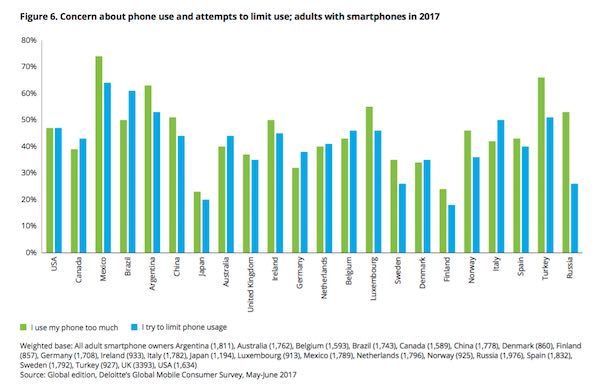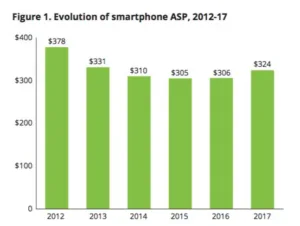In the latest “2018 Technology, Media and Telecommunications Predictions“, Deloitte talks about its view of the hot trends and new developments in the technology market for the upcoming year. Since this report is very detailed, please take a look at the segments that interest you the most, there is a good chance we did not cover all the aspects in this summary.
The reports goes in great detail into the development of some of the most interesting technology we cover here at Meko:
- Augmented Reality
- Smartphones
- Machine Learning
- TV Usage
AR
Usage of AR in 2018 is driven by AR content created with the smartphone camera. Many AR apps will be used just a few times before the users determine what is just a fad and what is really useful. Until then AR apps will be used and replaced until the users find what they want. So far, AR has been driven by very simple, cartoonish type AR effects on photos and video, but this may be changing in 2018 towards more photorealistic results. This development will continue in the coming years until photorealistic AR is the dominant version in the market.
Games will be increasingly offer AR features, even if these features are just side notes in the game. This will be driven by more and more AR integration in the mobile OS (iOS and Android).
All in all, Deloitte sees a lot of progress in the implementation of AR in 2018 however, this will not be the breakout year for AR. Most AR content will be created and viewed on smartphones with AR headsets still taking only slow steps to enter the consumer markets.
Smartphones
By 2023 smartphone penetration among adults in developed countries will be above 90%. As a consequence, smartphone sales will increase from 1.7 billion units in 2018 to 1.85 billion by 2023. Interestingly with this slight increase, even though one could call this market saturation, Deloitte predicts a further increase in the average selling price. This will be driven by higher end specs of these smartphones. The better specifications will allow other applications like AR and ML to create better performing apps, which in turn will lead to better consumer acceptance.
Deloitte – Smartphone ASP based on data from GfK
On the other hand, they do not foresee any significant changes to the look and feel of the smartphone (who wants to rock the boat that drove CE for many years?), other than the discussed improvements to the performance, which is not a new trend either. From a usage perspective, mobiles are becoming more and more important for content consumption as well as being tools for business purposes.
The flip side of the smartphone success is a that a growing number of users believe they are using the smartphone too much. In a survey in developed countries, most countries have 40% to 50% of smartphone uses saying that they are using their phone too much and are trying to limit the use. The exceptions are Japan, Scandinavian countries and Russia (they know that they use the phone too much, but they don’t care).
 Deloitte – People survey: Are we using the smartphone too much?Machine Learning
Deloitte – People survey: Are we using the smartphone too much?Machine Learning
One of the key technologies for Deloitte is ML (machine learning and AI (artificial intelligence)). This goes beyond the AI devices that Amazon and Google are throwing at the consumers and includes other devices like TVs, vacuums, smartphones, light switches, pretty much everything that makes today’s life livable.
To funnel this development, chip sales in support of this trend will quadruple from 200,000 units in 2016 to 800,000 units in 2018. While this is still a small number compared to other chip sales (think of the 1.7 billion smartphone CPUs and GPUs), the trend will continue and create better chips to make this technology even more attractive for the consumer. Mid- to long-term, Deloitte sees ML and AI as main technologies that will drive our society in the future.
TV Usage
Another area they paid attention to was the TV and media industry. They believe that $545 billion will be generated in this industry in 2018 (that is for the content side) , with almost 99% coming from the traditional sources of TV advertising and TV subscriptions. Despite all the talk about digital and on-demand media, they see that live TV will still do very well. This is partly driven by digital media that will include actual live TV events going forward.
Younger viewers are still decreasing their live TV consumption. In the UK, Deloitte sees a drop of 10% to 15% for the TV time of young adults (18 – 24 years) in 2018 and 2019, after which the further decline among this group will slow down. They also believe that it is possible for this decline to continue through 2023.
The switch to alternative delivery forms seems to be slower than expected and not to affect the actual viewed live TV time significantly. In the US, the average TV viewing time decreased by 10 min to 261 minutes. The number seems to include the time when the TV is running as a “noisy light source” in many US homes. At the same time, OTT services are including live TV into their offerings, blurring the line between the delivery forms even more.
As a consequence, online subscriptions will be growing by 20% in 2018, but Deloitte points out that the starting numbers are still very small. They also believe that other forms of paying for content such as tipping and contributions will become more important.
Another interesting look at the changes in TV usage is the the platform usage as a function of age. Deloitte surveyed 16 developed countries to find out who used what device for what activity.
 Deloitte Survey in 16 Countries – Screen preference by Age and Activity
Deloitte Survey in 16 Countries – Screen preference by Age and Activity
The results are easy to summarize, the older we get the more we prefer larger screens for certain activities. When it comes to TV, all age groups prefer their TV set over any mobile or computing devices. This does indeed indicate a slower than expected pace of change.
Other trends include:
- Number of mobile only households is increasing.
- In-flight connectivity is increasing.
Analyst Comment
It is always fun to read about the ideas of esteemed colleagues that go out on a limb to predict the future. We shouldn’t view this as an opportunity to point out what they got right or wrong from last year, but as an opportunity to focus on certain developments in the coming years. (NH)

